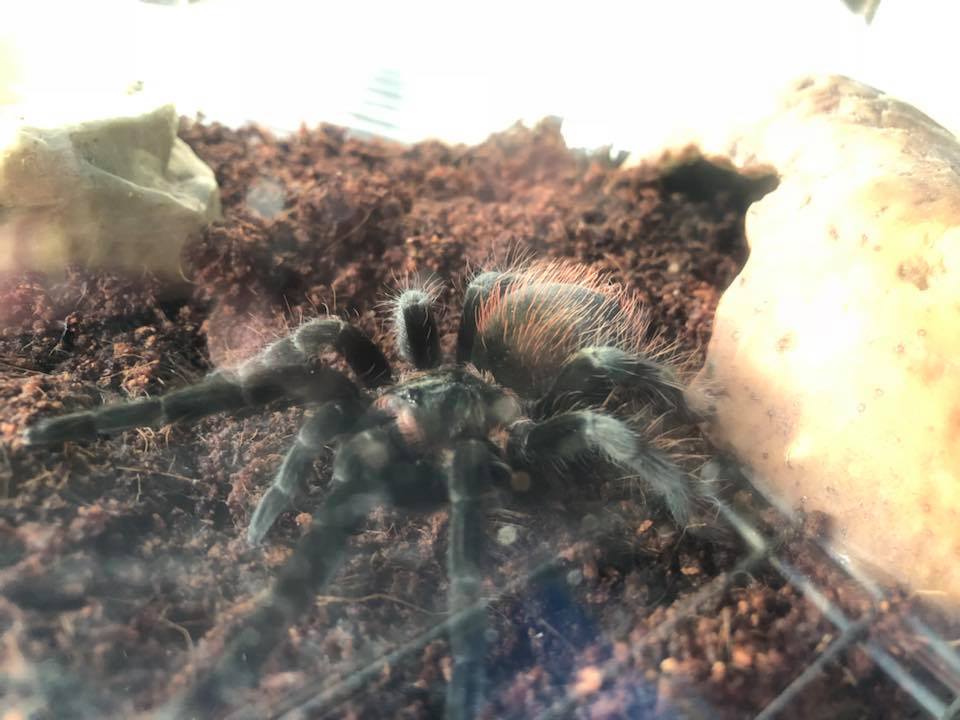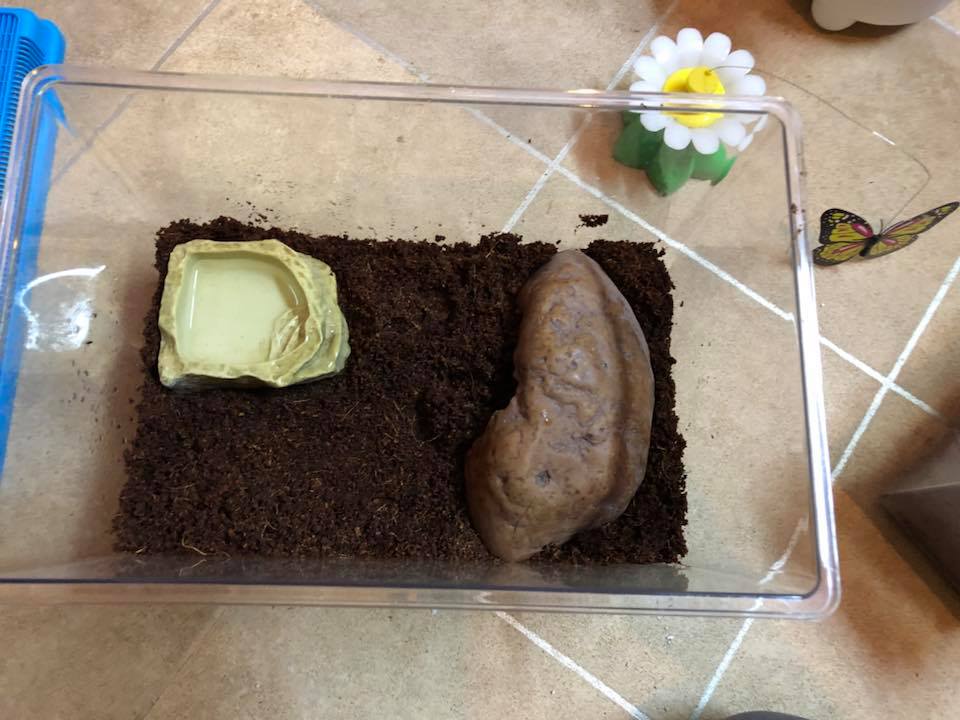Tarantulas are like marmite – you either love them or you hate them, but do they make good pets?
What do they live in?
Depending on what species you go for, they can either be arboreal meaning they like to climb or burrowing. They are roughly divided into two groups: “old world” (from the eastern hemisphere) and “new world” (from the western hemisphere). Generally speaking, ground-dwelling species are easier to care for, so are good beginner spiders. The Chilean Rose is a popular starter tarantula as they are easy to care for.
Once you have decided on a species, you will either need a tall tank or a long one. You don’t need to spend lots of money on a cage as plastic tanks work well, just be mindful of other animals in your home – plastic tanks are light and curious cats can knock these over.
Glass tanks are my personal preference as they look nice and Exo-terra brand tanks have a front opening which I find useful. You can use a fish tank, as long as there is ventilation. For burrowing species, The general rule of thumb is the tank should be at least three times the length of the spider. The tank should not be too big as they will it difficult to hunt their prey.
Arboreal species need a tall tank with branches to allow them to construct a web. They must have good ventilation but ensure the lid is well fitted because they are escape artists.
The bottom of the tank should have a substrate to allow burrowing and to hold moisture (I use this). Woodchip should be avoided. Cleaning out shouldn’t be done too often unless there is mould or mites. Spiders kept at low humidity only need cleaning out a few times a year, whereas humid setups will need to be cleaned more often.
What do they eat?
Tarantulas eat live food – usually, crickets or locust are fed as a good staple. They need to be size appropriate and unlike other animals, tarantulas don’t need feeding often – young spiders are a few times a week, whilst adults are fed every few months.
Food items should be smaller than the spiders’ abdomen, bigger prey items can harm your tarantula. Food items should be gut loaded with a healthy diet of fruit and vegetables before feeding – remember the better you keep your live food, the better they are for your tarantula!
How long do they live?
This will vary depending on species and gender. Females live a lot longer than males, who once mature, will die fairly quickly. A mature male’s goal in life is to find a female to mate with, and the female will sometimes eat the male after mating.
How do they grow?
Tarantulas moult – how often depends on how old they are, as growing tarantulas will shed more often than adults. To moult. the tarantula will flip onto their back and moult – so if your spider is on their back – leave them be as this process can take several hours. Tarantulas who are getting ready to moult will go off their food – during the moult, they will be vulnerable so don’t leave any live food in with them because live food could harm the tarantula.
It is vital that humidity levels are kept correct during this time. The tarantula can take several weeks to fully recover after the mouth, so if you do choose to handle them, definitely wait a while after they moult.
Heat and light
They do not need light and a dark area will suit them nicely. Some species need heat and this can be provided via a heat mat attached to a stat so it won’t overheat. Heat lamps should be avoided as they can dry out the cage.
They need misting
Depending on the species, the tarantula may need their home misted to keep the humidity up. A dry tank can be fatal for some species, so a light mist once or twice a day can be beneficial. Excess humidity can be dangerous and cause mould to grow. A simple water mister works well, however, I use this as I have lots of tanks to spray every day.
Regardless of species, they will need access to water. A shallow bowl can be given for adult tarantulas, but be careful with spiderlings who can drown – a bottle cap makes a good water dish for little ones!
Falls can be fatal
If you have ground-dwelling species falls can be deadly as they are quite heavy. You must be careful that the tank isn’t too tall, and if it is, you should put a deep layer of soil to prevent falls. Also be careful with tank decor, as tarantulas can climb them and fall. If they do fall, their abdomens can rupture, which can be fatal.
Can you hold them?
There’s a lot of debate out there regarding if tarantulas can be handled or not. Some keepers don’t handle any of their spiders, whilst others handle the more docile species, such as the Curly Hair. The argument is any sort of fall could kill them, and they can flick their hairs too as a defence mechanism. Some tarantulas have “urticating”, which are hairs on their abdomen which cause itching. They flick these hairs by rubbing them if they feel threatened. These hairs are barbed and work their way into the threats skin, making it itchy and causing irritation. Personally, I have never handled any of the tarantulas I have owned.

They can be shy
Jokingly referred to as a pet rock, tarantulas do need somewhere to hide within their cage. Some species like to burrow, so make sure they have the ability to do this in their home.
There are lots of hides available, or a plant pot on its side works just as well – just make sure it is sturdy and won’t roll and hurt your tarantula.
Are they venomous?
Tarantulas are venomous, however, most species venom is only on par with the toxicity of a wasp or bee sting, causing localised redness, pain and swelling. Some people may be allergic to the venom and have an anaphylactic shock.
In conclusion, if you are looking for a pet that doesn’t want a lot of interaction, a tarantula could be the pet for you. Just remember, getting a pet on impulse is never a good idea.



